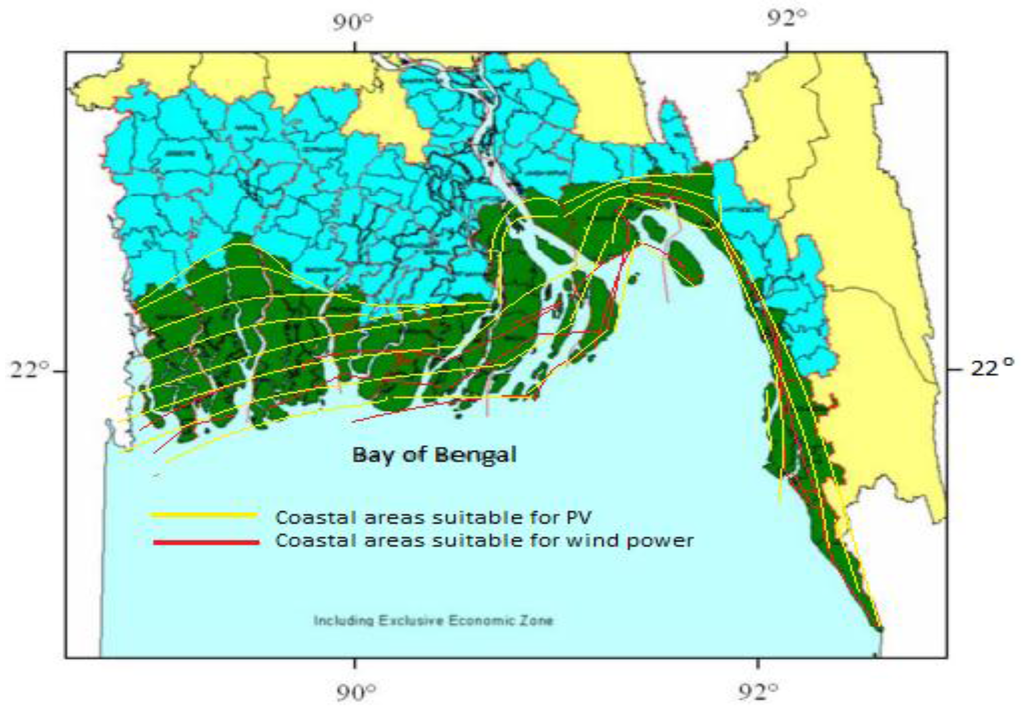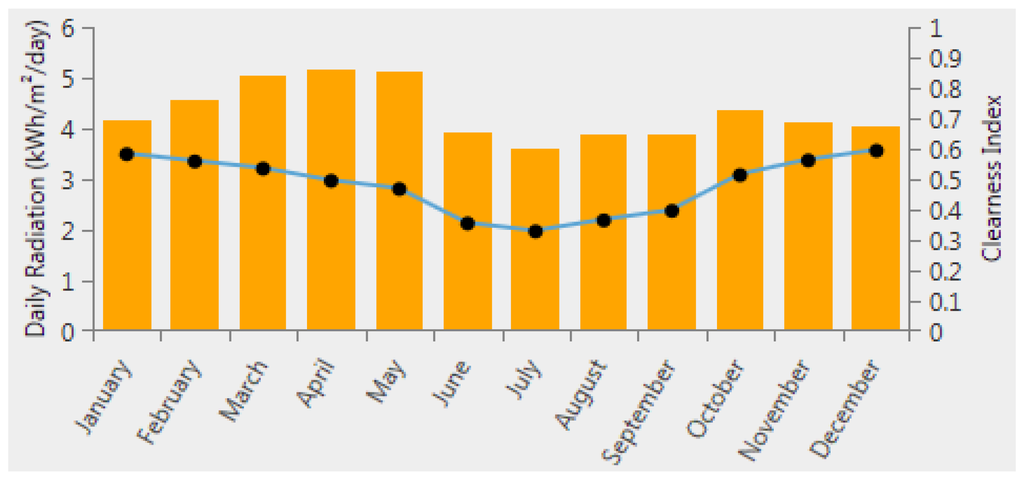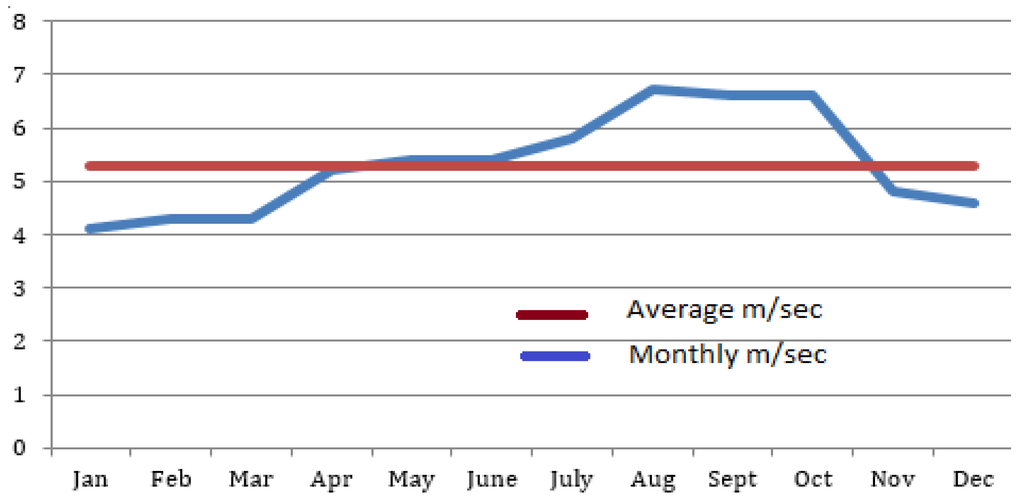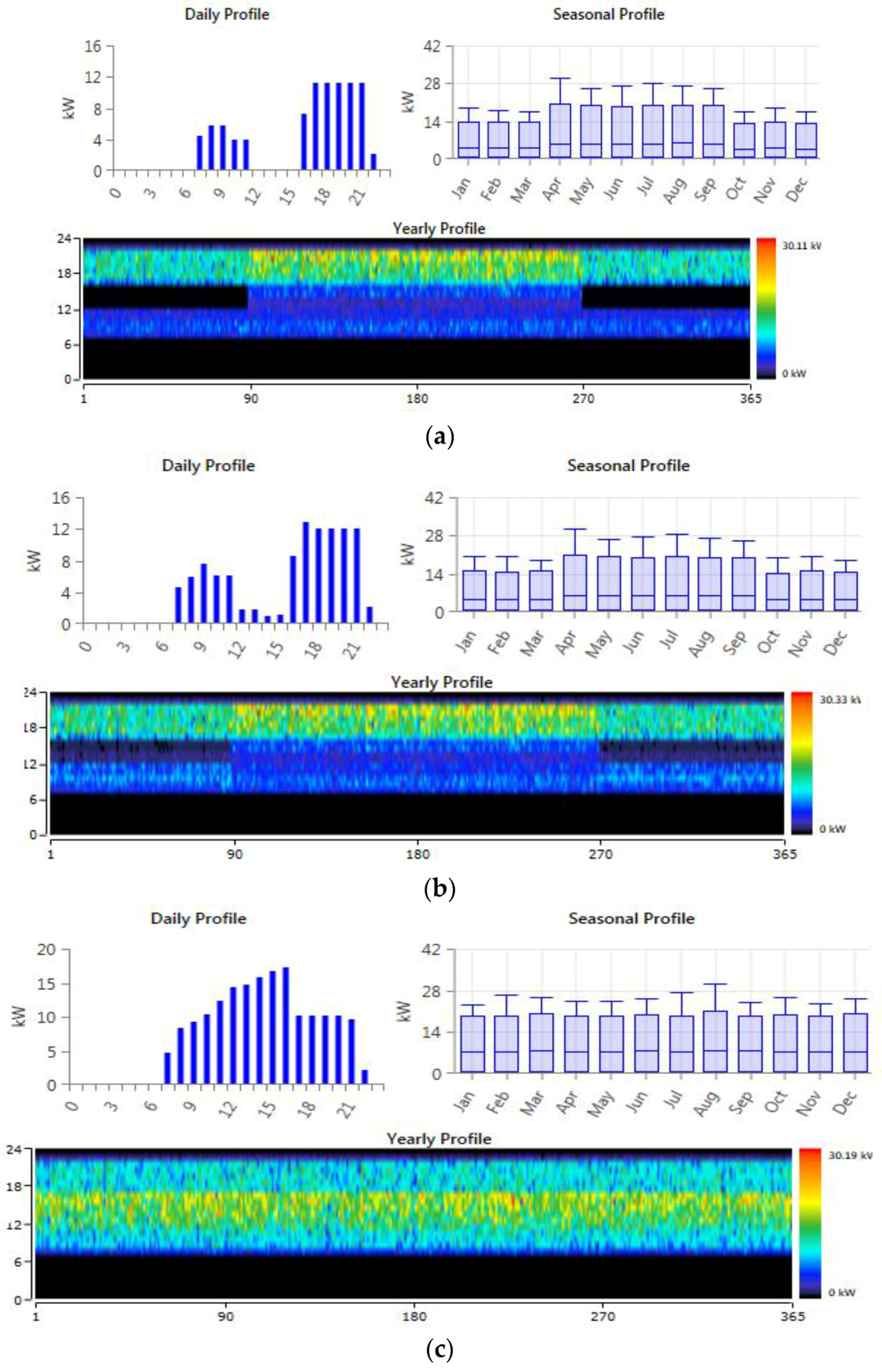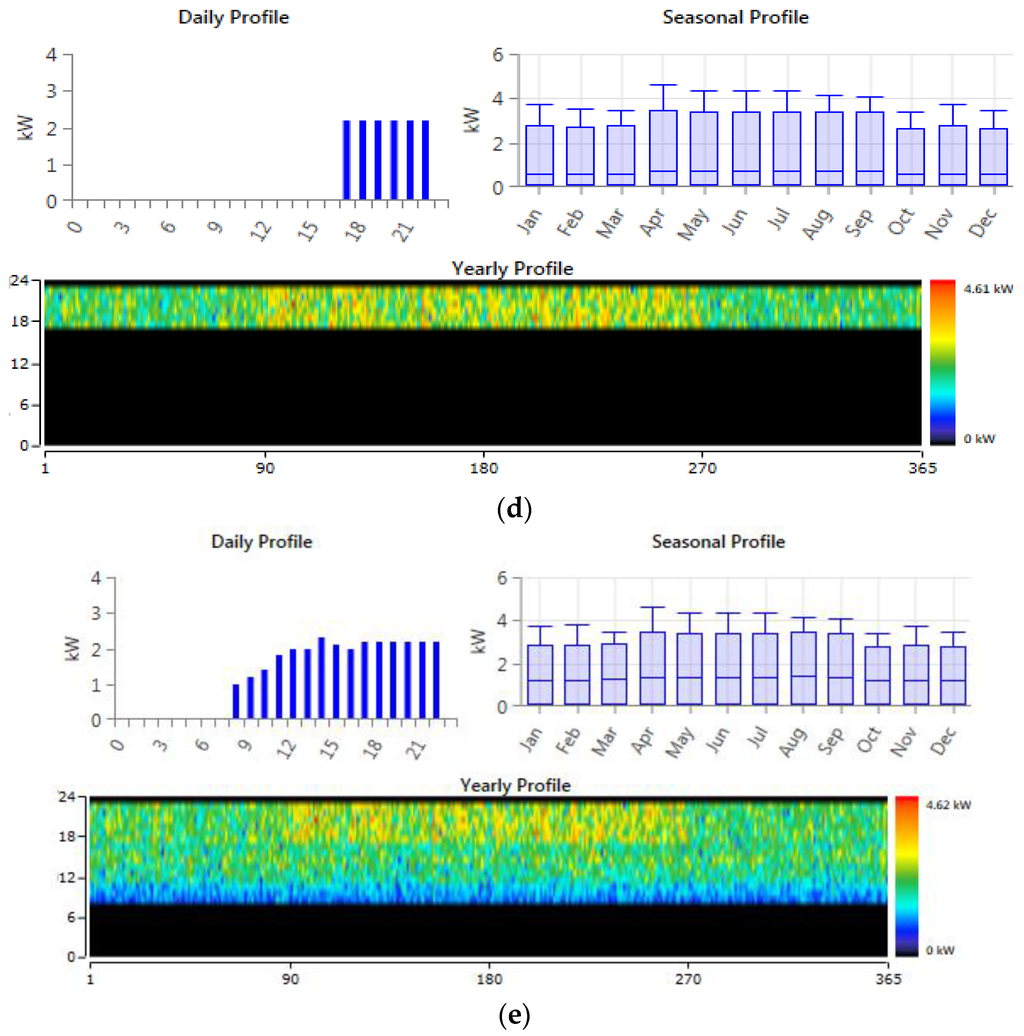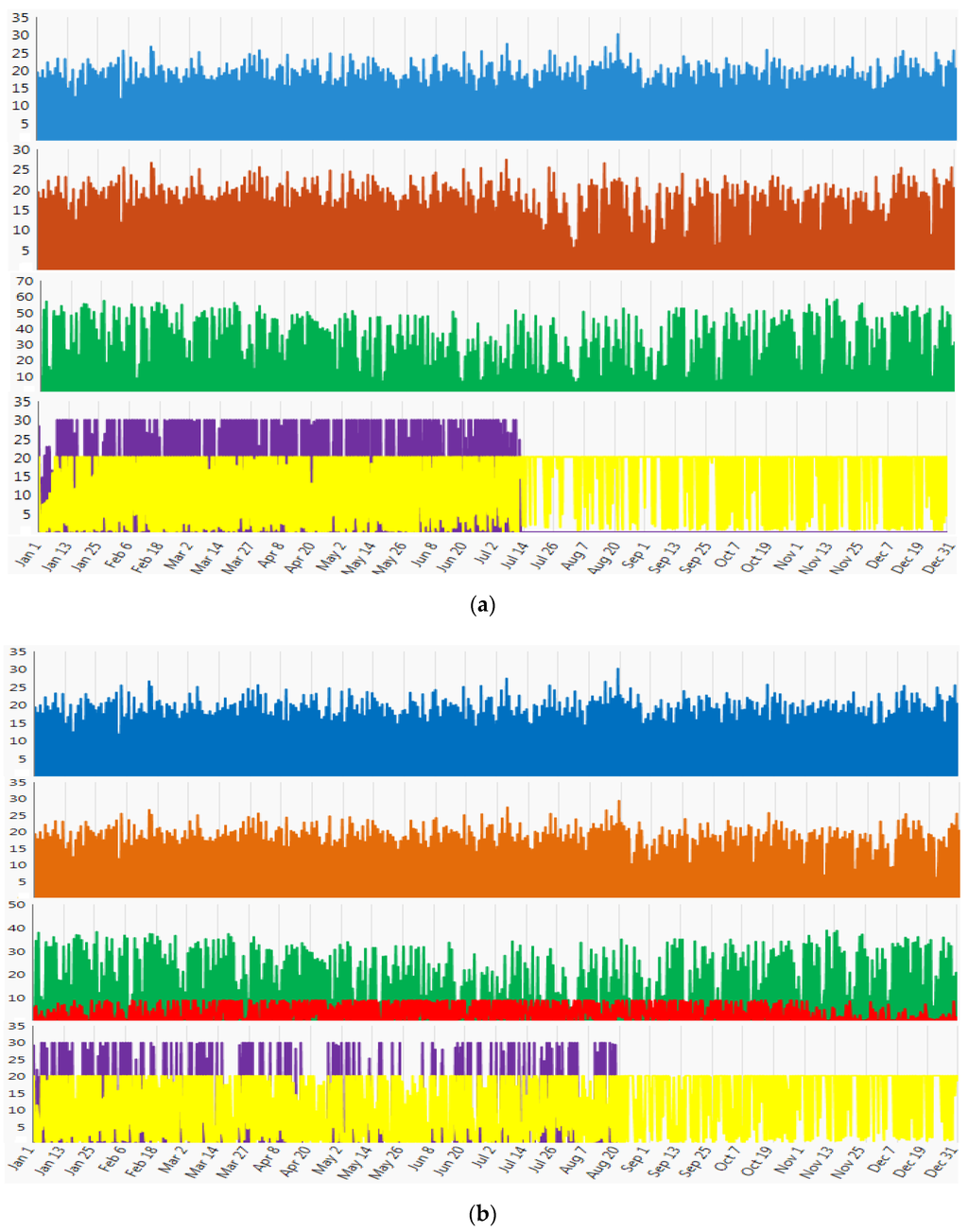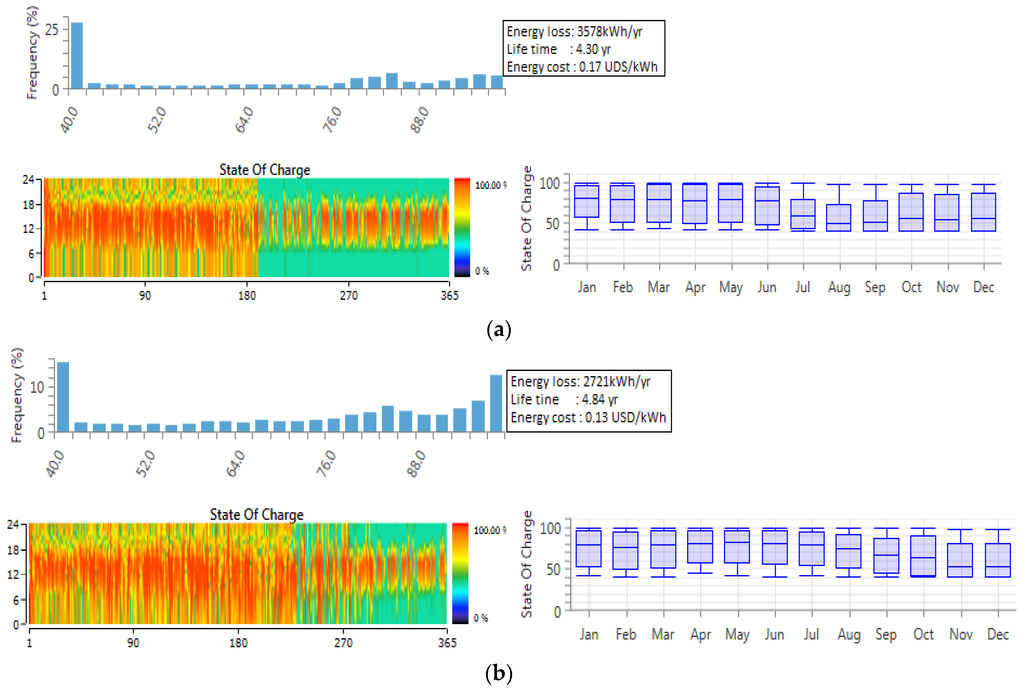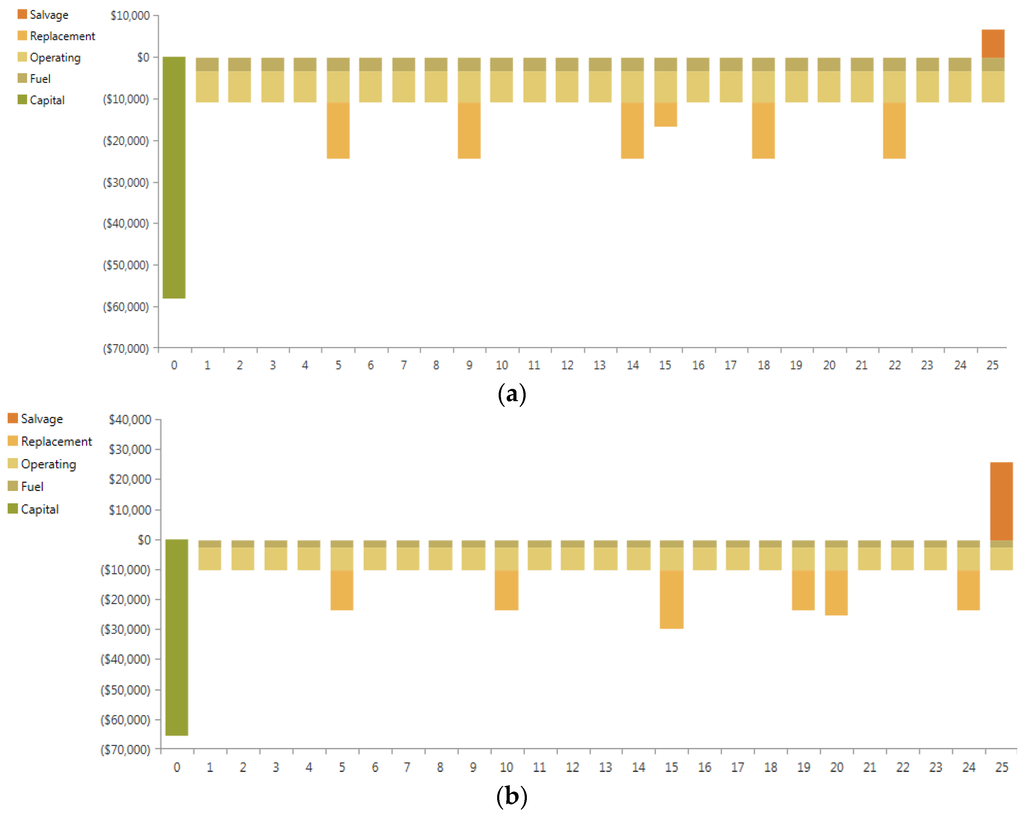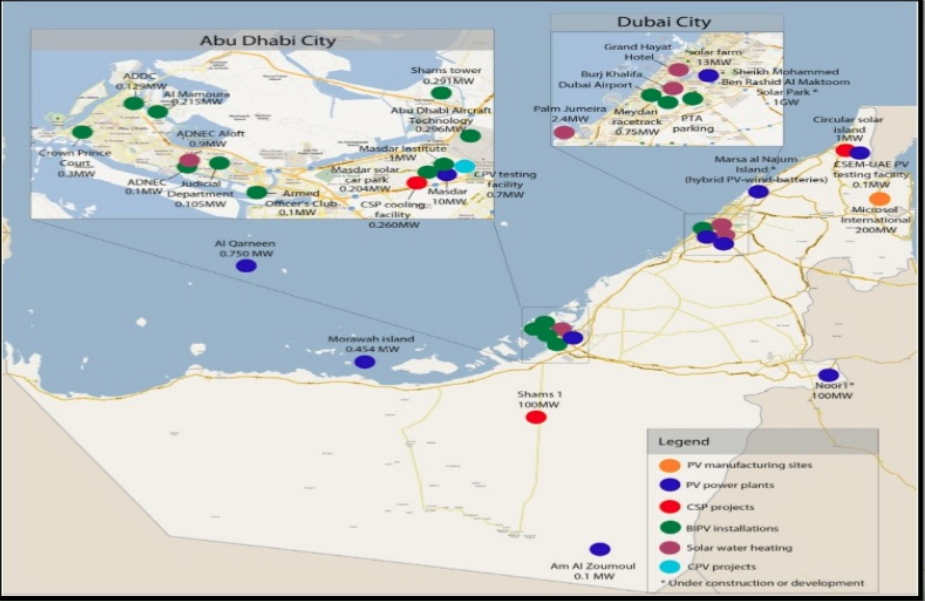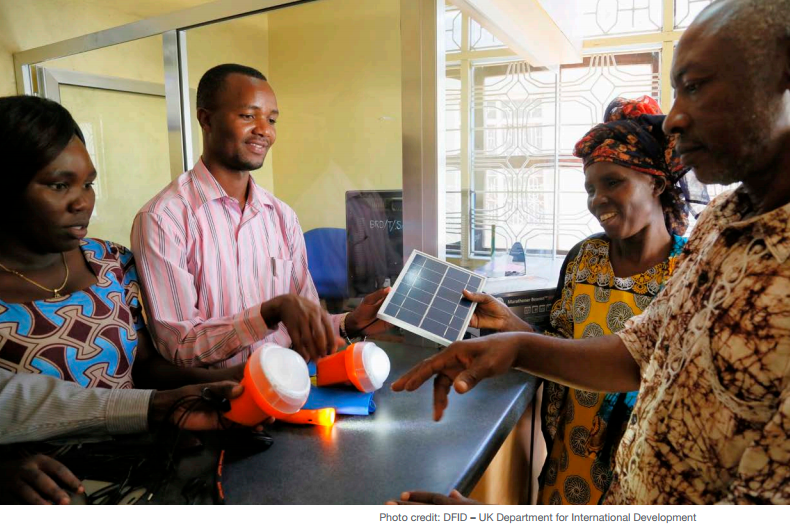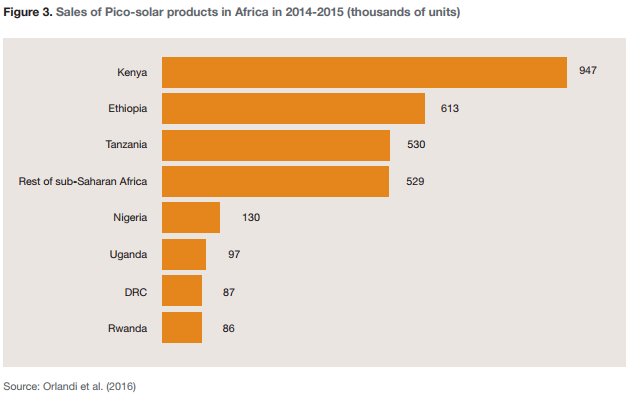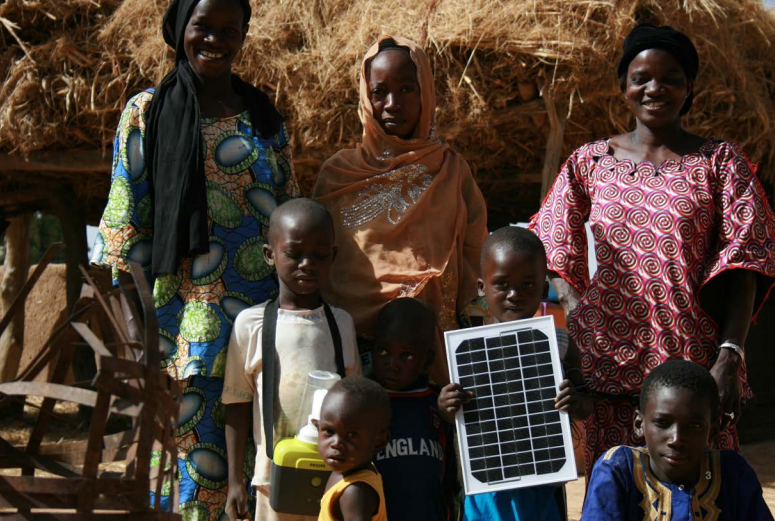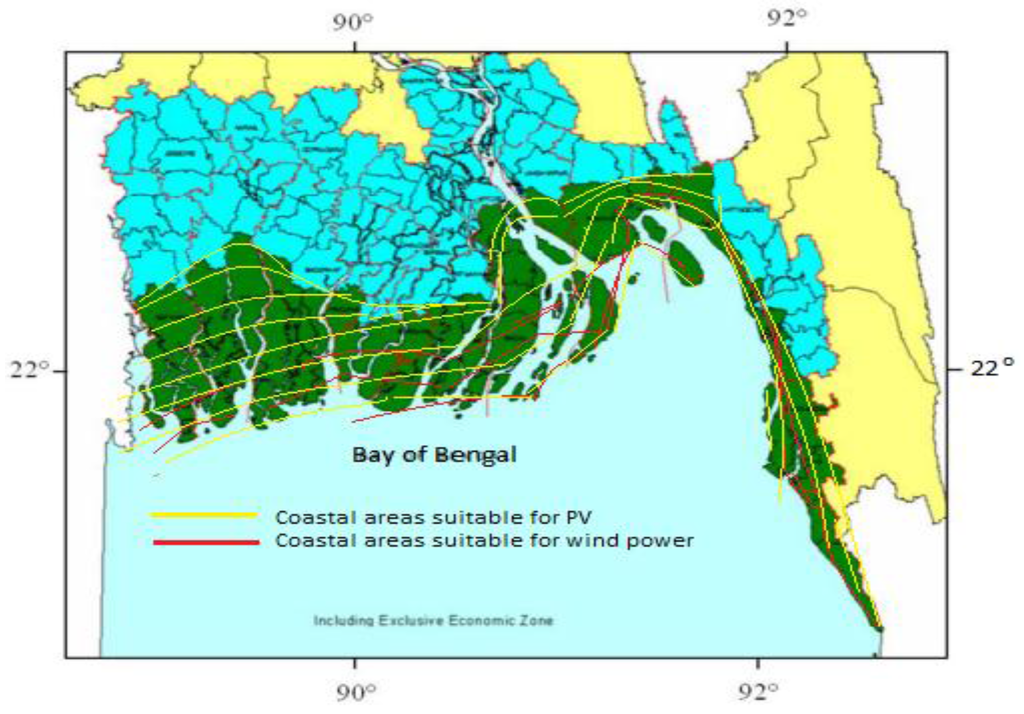
The energy poor, at the bottom of the economic pyramid (BOP), are unlikely to get the benefits of globalization without having access to the products and services that represent modern day quality standards. Per capita electricity consumption in Bangladesh (259 kWh) is one of the lowest in the world [1]. Currently, the actual generation capacity is 7200 MW, although the installed generation capacity is 9000 MW [2]. According to the National Energy Policy of Bangladesh, the projected demand of electricity in 2020 is 17,580 MW [3]. A national grid covers mostly the urban areas with large industrial and domestic loads leaving the rural areas with either very poor or no supply. Moreover, as the country is crisscrossed by numerous rivers and the population distribution in rural areas is uneven, the grid electrification in many parts of Bangladesh is both difficult and expensive. Only about 40% of rural households have access to grid electricity [4] and the supply is very unreliable.
The coastal areas of Bangladesh (Figure 1) including nineteen administrative districts featuring approximately 270 km coastline are some of the most deprived parts of the country with a disproportionately low level of supply of electricity. Many remote coastal villages and all islands off the coast of Bay of Bengal do not have any grid electricity supply. To improve the rural electrification rate Bangladesh government has been trying to implement renewable energy resources and technologies. The objective of its “final renewable energy policy 2008” [5] is to harness the potential of renewable energy resources and dissemination of technologies especially in the rural areas by encouraging and facilitating both public and private sector investment, hence to promote clean energy with a set target of achieving ten percent of total energy demand from the renewable sources by 2020. Through this policy, government is committed to formulate the way out to attract huge investment in renewable energy projects to substitute non-renewable energy supplies and scale up contributions of existing renewable energy based electricity productions.
Bangladesh has achieved a large success in using standalone solar home systems (SHS) as part of its initiative to use renewable sources to offer more access to electricity. Two million SHS have been installed so far to serve 8.25 million people in the off-grid areas [7] and the average diffusion rate of SHS is 50,000 units per month [8], which is considered the fastest SHS growth rate in the world. This renewable energy technology (RET) has been promoted in the market by using different financial packages like, subsidies and soft loans. At present, the total installed capacity is around 94 MW through the SHSs already installed in the country [9]. Quality of electricity produced by the SHS and the daily duration of supply restrict the users from the many benefits of modern electricity and the unit cost is much higher compared to the grid option [10]. Even with the recent falling price of solar PV panels, the cost of electricity in a SHS is around USD 0.8–1.10 per kWh [11], which is considered very high by any standard.
However, in recent times, local grid-based electricity supply has received global attention and studies by the International Energy Agency (IEA) [12] and World Bank [13] suggest that such mini-grids could cater for 60% of electrification demand in the future. However, despite having various renewable energy resources available, Bangladesh has not adopted mini-grids to a significant level. Only a few pilot projects exist (i.e., Sunamganj Solar mini-grid, Sandwip solar-diesel hybrid mini-grid, Thanchi Solar mini-grid, Kutubdia wind mini-grid) [14] and it is important to explore the techno-economic attractiveness of such an option in the local context. Accordingly, this paper presents a systematic study of the coastal region of Bangladesh using HOMER simulation software to identify the hybrid renewable energy technologies for mini-grid based supply.
The paper is organized as follows: Section 2 presents the mini-grid options; Section 3 outlines the methodology while Section 4 contains the results. Discussion are presented in Section 5 and final recommendations are presented in Section 6.
2. Mini-Grid Options
Studies [15,16,17,18,19] showed that hybrid power systems could be more reliable and cheaper than single source energy systems for decentralized mode of operation. Kumar and Manoharan [20] indicate positive dissemination of hybrid mini grid systems in different climatic zones of Tamil Nadu, India where existing power supply through the main grid is unstable. Study conducted for the rural and semi-urban northern part of Nigeria suggests that decentralized hybrid systems are a better and cheaper option in long run compared to diesel generators [21]. The foreseeable limitations and possibilities associated with the hybrid mini-grids have been highlighted in different literatures [22,23,24,25,26,27,28,29,30,31]. Only a few works [32,33,34,35,36,37] exist in this field in Bangladesh and the limitations and possibilities of hybrid mini grids are still to be explored.
Given that local resources, enabling policy environment and village-level information are essential to any analysis of mini-grid based electrification, these are considered below for the coastal areas of Bangladesh.
2.1. Renewable Resources
2.2. Policy Support
2.3. Mini-Grid Implementation
3. Methodology
To suggest the most sustainable techno-economic hybrid mini-grid models for the coastal regions including the islands we have tested ten different system configurations having different load scenarios. All of these models are briefly described initially and two optimal models are discussed elaborately and their results are analyzed in detail. For solar radiation data in the study areas the National Renewable Energy Laboratory (NREL), USA database has been used applying the HOMER resources menu and the monthly average solar radiation in the study area is shown in Figure 2. Wind resources were derived from different studies [6,32,44,45] based on the field data collected by Bangladesh Meteorology Department (BDM) at different times and average wind speed is presented in Figure 3. Different load profiles (domestic only, domestic and commercial combined and managed load) have been formulated using socio-economic pattern and current trend of energy consumptions in the study areas. Domestic and combined load profiles are built on the usual life styles of the people in the study areas, i.e., domestic consumers charge mobile phones and play audio devices in the morning, shops run live TVs only in evening and farmers use irrigation pumps in the morning. The managed load profile is based on the assumption that if consumers are let to make informed decision on the consumption schedule of electricity, the load demand can be synchronized with the power production schedule of different components of the hybrid systems. For example, shops can run recorded TV for extended hours and farmers can use pumps only when systems produce excess power based on the natural resource supply. Managed load profile has been designed to achieve best hybrid system efficiency.
Three bigger load profiles applied to serve various combinations of 200 households, 15 businesses, 5 irrigation pumps and 2 cottage factories for 12 h (Figure 4a) and 16 h (Figure 4b,c) a day termed as “Load profile 1, 2 and 3” serving the maximum load of 30.11 kW, 30.33 kW and 30.19 kW, respectively. On the other hand, two smaller load profiles for two different durations and load patterns serving 6 h domestic load only (Figure 4d) and 15 h combined domestic and commercial load (Figure 4e) termed as “Load profile 4 and 5” serving maximum load of 4.61 kW and 4.62 kW respectively were applied to this study. Seasonal domestic, commercial and agricultural or other small industrial loads have been separated for the three bigger load profiles (load profile 1, 2 and 3) to ensure better simulation efficiency (Table 1).
For economic analysis the fixed capital cost, cost of equipment, maintenance, fuel cost and applicable subsidies were considered. Two different capital investment approaches were applied; the first approach is 50% soft loan with 5% interest rate and 50% investor equity and the second one is 40% capital subsidy provided by IDCOL, 30% soft loan with 5% interest and 30% investor’s equity. Fixed capital costs of USD 25,000 and USD 15,000 have been estimated for the larger (30 kW + peak) and smaller projects (4 kW + peak) to cover the cost of power station building, equipment installations, distribution network and customer metering. Generic flat panel PV, diesel generator, generic 3 kW and 1 kW wind turbines, lead acid battery (6 V, 225–360 Ah) and converter’s initial costs are estimated as USD 600/kW, USD 500/kW, USD 8000 and USD 3000, USD 175/battery and USD 250/kW respectively and the replacement costs as USD 400/kW, USD 400/kW, USD 6000 and USD 2000, USD 150/battery and USD 200/kW. All the costs were calculated based on the availability of the equipment in the local market (Component price compared with the current market price offered by two major supplies (or system installers) in Bangladesh: Navana Renewables and Rahim Afroze Renewable energy) while complying with quality standard required by IDCOL. The total project life has been used as 25 years for lifecycle cost analysis along with assumed life of PV 25 years, generator 20 years, wind turbine 20 years, battery 10 years (depends on actual state of charge) and converter 25 years. Cost of diesel estimated as USD 0.80/L as a primary fuel for the generator.

HOMER uses the following equation to calculate the total net present cost:

























where, Cann,tot is the total annualized cost, i the annual real interest rate (the discount rate), Rproj the project lifetime, and CRF (i,N) is the capital recovery factor, given by the equation:
























where, i is the annual real interest rate and N is the number of years. HOMER uses the following equation to calculate the levelized cost of energy (COE):


































where, Cann,tot is the total annualized cost, Eprim and Edef are the total amounts of primary and deferrable load, respectively, that the system serves per year, and Egrid;sales is the amount of energy sold to the grid per year (for this study Egrid;salesvalue is zero as systems considered here are not grid connected or ready to grid connect). The levelized cost of energy is therefore the average cost per kWh of useful electrical energy produced by the system but not the amount of energy utilized by the end users.
4. Results
Homer analyzed around 9216 simulations for each of the ten different load profiles and for different hybrid system configurations having various sensitivity variables and economic constrains (i.e., capacity shortage, battery life, fuel usages, interest rate, capital subsidy, excess energy) and presents around 65 feasible models. The optimal Hybrid Mini-Grid (HMG) system configurations for designed load profile 1, 2, 3, 4 and 5 suggested by HOMER are presented in detail in Table 2. For load profile 1, where only domestic load (110.06 kWh/day) is applied, the proposed HMG 1 and 4 present the highest unit cost of electricity between USD 0.579–USD 0.476 for no capital subsidy and 40% capital subsidy, respectively. While the commercial load of 12.593 kWh/day added to the regular domestic load representing “load profile 2” for the current study the HMG 2 and 5 present the cost of electricity as USD 0.542–USD 0.508 and USD 0.466–USD 0.428 for no subsidy and 40% subsidized capital investment. However, applying the managed load profile with extended commercial and small industrial load of 45.358 kWh/day the lowest unit COE of USD 0.368–USD 0.366 and USD 0.316–USD 0.29 achieved through HMG 3 and 6 using no subsidy and 40% subsidy, respectively. By using managed load profile HMG 6 and 3 produce only 17% and 19% of excess electricity through out the year in compare to 37% and 35% in HMG 1 and 7, respectively.
The HMG 7, 8, 9 and 10 with relatively much smaller load (load profiles 4 and 5) present the COE very high in comparison to the bigger load profiles studied. Different system configurations (HMG 7 and 8) operating only 6 h in the evening serving 14.7 kWh/day represent COE as high as USD 1.39–USD 1.34 for no capital subsidy. However, the same HMGs serving the same load profile with 40% capital subsidy supply electricity for USD 1.14–USD 1.10. HMG 8 and 10 with different system configurations applying relatively higher combined load of 30.5 kWh/day over 15 h a day deliver electricity at a lower price of USD 0.582–USD 0.626/kWh.
Capital subsidy used in this study (40%), showed significant reduction in COE between USD 0.13–USD 0.25/kWh in cases of HMGs with very small loads (HMG7–10, Table 2). On the other hand, same amount of subsidy applied on systems with relatively bigger loads (HMG 1–6; Table 2) reduces the COE ranging from USD 0.05–USD 0.08/kWh.
The optimal hybrid systems identified in this study based on the net present cost and COE are HMG 3 and HMG 6 both serving the managed load profile. A detailed time series analysis of these two hybrid systems (Figure 5a,b) indicates clear harmony between primary AC load demand and load served. Capacity shortage is smaller in HMG 6 (6%) than in HMG 3 (8%) as the gap between the load demand and combined power served by different components is very marginal. HMG 6 shows steady performance by all of its components, especially power produced by the wind turbine during the months of August to November, thereby reducing the dependency on generator. Moreover, the synchronized maximum charge state increases the battery life and hence reduces the cost of electricity (Figure 6a,b). The maximum battery life of 4.30 years and 4.84 years achieved in HMG 3 and HMG 6 accordingly. On the other hand equal converter lifetime (8.5 years) was observed for both the hybrid systems. Analyzing the nominal cash flow between two optimal hybrid systems, HMG 3 and HMG 6 (Figure 7a,b) it is clear that HMG 6 offers the best cash flow throughout the project life.

 AC Primary Load
AC Primary Load  AC Primary Load Served
AC Primary Load Served  PV Power Generation
PV Power Generation  Generator Power Output
Generator Power Output  Battery Maximum Charge
Battery Maximum Charge  Wind Turbine Power Output.
Wind Turbine Power Output.5. Discussion
Availability and the average intensity of solar and wind resources for a specific hybrid system in the proposed study areas are same. Therefore, renewable resources and component combinations for HMGs can be either Solar-diesel generator-battery or solar-wind-diesel generator- battery depending on the location of the project. Hybrid systems with wind turbines can be implemented in areas covered by the thin red line in Figure 1, where wind speed is relatively higher. Study [51] conducted on renewable energy storage systems on small islands show that the combination of wind power and battery storage is less favorable compare to PV-battery hybrid systems as it is uneconomical at low wind speed. Projects serving relatively bigger electrical loads in this study represent better NPC and much cheaper COE.
Tariff is probably the most important element of successful sustainable decentralized hybrid mini-grid implementation. No willingness to pay (WTP) study has been carried out for the decentralized hybrid renewable energy supply in the off-grid areas of Bangladesh. As neither SEDA nor IDCOL decide the retail price of the electricity produced by the private investors using renewable energy sources, a sustainable tariff has to be introduced by the supplier to make the project viable. Rural people in Bangladesh using stand-alone SHS actually pay USD 1.04/kWh [52] and USD 0.60–0.98/kWh for using diesel grid [53] and USD 0.67/kWh for kerosene [54]. It is evident from the most successful 100 kW PV-diesel hybrid system with battery bank in Sandwip, Bangladesh that consumers are willing to pay USD 0.41/kWh of electricity [53]. Therefore, average tariff ranging from USD 0.40–USD 0.45/kWh can be applied for the decentralized hybrid systems in rural Bangladesh, which can guarantee enough profit for the investors producing electricity for USD 0.29/kWh or USD 0.316/kWh from the study under configurations HMG 6 and 3 respectively. Given that they offer electricity at a relatively low cost, these two models of HMGs become candidates for replication in the whole coastal areas of Bangladesh.
6. Recommendations
The optimal hybrid system configurations obtained from the study indicate that cost-effective hybrid mini-grids can be developed for decentralized electricity supply in the coastal areas of Bangladesh. However, an efficient revenue recovery strategy is important to ensure project implementation. Consumers in the mini grid area could be categorized depending on their need and financial capability. For the basic users, a fixed monthly/ weekly charge for usages can be applied. On the other hand medium and large users can be connected with pre-pay or post-pay meters depending on their financial conditions. For commercial usages, i.e., shops, cottage factories etc., a fixed charge can be applied or be fitted with meters as “pay as you go” basis.
Smart pricing of electricity is essential, which sets different price for different hours of the day and night depending on the cost of production. Time varying pricing scheme [55] can be a very effective tool for influencing the price responsive end users. “Seasonal tariff set up” is another option to recover the cost of production with varying availability of resources in specific project locations. For agricultural activities, a subsidized tariff may be required, as farmers use highly subsidized diesel for irrigation. In this case private electricity suppliers may request for an extended “tariff subsidy” for agricultural activities and receive support from the government.
Regular interactions with the local member of the public will be a prerequisite for better understanding of the consumer need. Local youth can be trained to ensure skilled manpower supply for any future project expansion. However, consumers need to be educated both by the public and private sector for effective and productive use of electricity. Thus social empowerment can be achieved, which in turn will help mass diffusion of renewable mini grids.
Timely maintenance of every equipment and replacement are very important for providing reliable service and acquiring consumer’s confidence and loyalty. Any operation and maintenance should be in accordance with the policy guideline. For smart operation remote data monitoring system can be applied. Everyday operational data and resources abundance need to be duly collected and preserved, as this would help both the private investor itself and the policy makers to step forward in mass penetration in this market.
References
- Electricity Power Consumption Data 2014. The World Bank. Available online: http://data.worldbank.org/indicator/EG.USE.ELEC.KH.PC (accessed on 27 March 2015).
- Bangladesh Power Development Board (BPDB). Maximum Generation Report 2015. Available online: http://www.bpdb.gov.bd/bpdb/index.php?option=com_content&view=article&id=126&Itemid=17 (accessed on 16 October 2015).
- Bangladesh Power Development Board (BPDB). Annual Report 2011–2012, BPDB, Dhaka. Available online: http://www.bpdb.gov.bd/download/annual_report/ANNUAL_REPORT__2011-2012.PDF
(accessed on May 2014).
- World Bank. Lighting Up Rural Communities in Bangladesh. January 2015. Available online: http://www.worldbank.org/en/news/feature/2014/01/15/lighting-up-rural-communities-in-bangladesh (accessed on 12 June 2015). [Google Scholar]
- Renewable Energy Policy of Bangladesh, Power Division, Ministry of Power Energy and Mineral Resources, Government of the Peoples Republic of Bangladesh. 18 December 2008. Available online: http://www.iea.org/media/pams/bangladesh/Bangladesh_RenewableEnergyPolicy_2008.pdf
(accessed on 23 February 2015).
- Khan, M.J.; Iqbal, M.T.; Mahboob, S. A wind map of Bangladesh. Ren Energy 2004, 29, 643–660. [Google Scholar] [CrossRef]
- Infrastructure Development Company Limited (IDCOL). Celebration of Installation 2 Million Solar Home Systems and Launching of 1 Million Improved Cook Stoves Project, 15 May 2013. Available online: http://www.idcol.org/home/events/2013 (accessed on 12 January 2015).
- The World Bank, Benefits of Solar Home Systems: An Analysis from Bangladesh, Documents and Reports. 2013. Available online: http://www-wds.worldbank.org/external/default/WDSContentServer/WDSP/IB/2013/12/12/000158349_20131212101526/Rendered/PDF/WPS6724.pdf
(accessed on 18 April 2015).
- Hamid, M.R. Photovoltaic Based Solar Home Systems: Current State of Dissemination in Rural Areas of Bangladesh and Future Prospect. Int. J. Adv. Res. Electron. Instrum. Eng. 2013, 2, 745–749. [Google Scholar]
- Hussain, S.; Davies, M.C.; Sushenjit, B.; Limnin, W. Quantifying Carbon and Distributional Benefits of Solar Home System Programs in Bangladesh, The World Bank Environment Department, Policy Research Working Paper 5545. 2011. Available online: http://elibrary.worldbank.org/doi/pdf/10.1596/1813-9450-5545 (accessed on 14 January 2015). [Google Scholar]
- Khan, M.R.; Khan, M.F. Energy cost calculations for a Solar PV Home System. In Proceedings of the 1st International Conference on the Developments in Renewable Energy Technology, Dhaka, Bangladesh, 17–19 December 2009.
- International Energy Agency (IEA). World Energy Outlook. 2011. Available online: http://www.worldenergyoutlook.org/media/weowebsite/energydevelopment/weo2011_energy_for_all.pdf
(accessed on 3 February 2015). [Google Scholar]
- The World Bank. Technical and Economic Assessment of Off-Grid, Mini-Grid and Grid Electrification Technologies, Technical Paper 121/07. 2007. Available online: http://siteresources.worldbank.org/INTENERGY/Resources/MiniGridElectrificationTechnicalReport61207.pdf
(accessed on 14 January 2015). [Google Scholar]
- Bangladesh Power Development Board (BPDB). Development of Renewable Technologies by BPDB. Available online: http://www.bpdb.gov.bd/bpdb/index.php?option=com_content&view=article&id=26&Itemid=24 (accessed on 21 March 2015).
- Adaramola, M.S. Feasibility study of off-grid hybrid energy systems for applications in Ondo state, Nigeria. J. Eng. Appl. Sci. 2012, 7, 72–78. [Google Scholar]
- Adaramola, M.S.; Oyewola, O.M.; Paul, S.S. Technical and economic assessment of hybrid energy systems in South-West Nigeria. Energy Explor. Exploit. 2012, 30, 533–552. [Google Scholar] [CrossRef]
- Ajao, K.R.; Oladosu, O.A.; Popoola, O.T. Using HOMER power optimization software for cost benefit analysis of hybrid-solar power generation relative to utility cost in Nigeria. Int. J. Res. Rev. Appl. Sci. 2011, 7, 96–102. [Google Scholar]
- Nema, P.; Nema, R.K.; Rangnekar, S. A current and future state of art development of hybrid energy system using wind and PV-solar: A review. Renew. Sustain. Energy Rev. 2009, 13, 2096–2103. [Google Scholar] [CrossRef]
- Bertheau, P.; Cader, C.; Huyskens, H.; Blechinger, P. The Influence of Diesel Fuel Subsidies and Taxes on the Potential for Solar-Powered Hybrid Systems in Africa. Resources 2015, 4, 673–691. [Google Scholar] [CrossRef]
- Kumar, U.S.; Manoharan, P.S. Economic analysis of hybrid power systems (PV/diesel) in different climatic zones of Tamil Nadu. Energy Conserv. Manag. 2014, 80, 469–476. [Google Scholar] [CrossRef]
- Adaramola, M.S.; Paul, S.S.; Oyewola, O.M. Assessment of decentralized hybrid PV solar-diesel power system for application in northern part of Nigeria. Energy Sustian. Dev. 2014, 19, 72–78. [Google Scholar] [CrossRef]
- Alliance for Rural Electrification. Off-Grid Solutions for Rural Electrification and Policies to Support Them. Available online: http://www.ruralelec.org/fileadmin/DATA/Documents/06_Publications/ARE_Best_Practises_2013_FINAL.pdf
(accessed on 21 August 2015).
- Belfkira, R.; Barakat, G.; Nicolas, T.; Nichita, C. Design study and optimization of a grid independent wind/PV/Diesel system. In Proceedings of the 13th European Conference on Power Electronics and Applications, Barcelona, Spain, 8–10 September 2009.
- Kumar, A.; Mohanty, P.; Palit, D.; Chaurey, A. Approach for standardization of off-grid electrification projects. Ren. Sustain. Energy Rev. 2009, 13, 1946–1956. [Google Scholar] [CrossRef]
- Chen, J.; Che, Y.; Zhao, L. Design and research of off-grid wind-solar hybrid power generation systems. In Proceedings of the 4th International Conference on Power Electronics Systems and Applications (PESA), Hong Kong, China, 8–10 June 2011.
- Dalwadi, P.; Shrinet, V.; Mehta, C.R.; Shah, P. Optimization of solar-wind hybrid system for distributed generation. In Proceedings of the Nirma University International Conference on Engineering (NUiCONE), Ahmedabad, India, 8–10 December 2011.
- Viral, R.K.; Bahar, T.; Bansal, M. Mini grid development for rural electrification in remote India. Int. J. Emerg. Technol. Adv. Eng. 2013, 3, 356–361. [Google Scholar]
- Ulsrud, K.; Winther, T.; Palit, D.; Rohracher, H.; Sandgren, J. The solar transitions research on solar mini-grids in India: Learning from local cases of innovative socio-technical systems. Energy Sustain. Dev. 2011, 15, 292–302. [Google Scholar] [CrossRef]
- Sadiqi, M.; Pahwa, A.; Miller, R.D. Basic design and cost optimization of a hybrid power system for rural communities in Afghanistan. In Proceedings of the North American Power Symposium (NAPS), Urbana Champaign, IL, USA, 9–11 September 2012.
- Bekele, G.; Tadesse, G. Feasibility study of small Hydro/PV/Wind hybrid system for off-grid rural electrification in Ethiopia. Appl. Eng. 2012, 97, 5–15. [Google Scholar] [CrossRef]
- The Energy and Resources Institute (TERI). Analysis of Rural Electrification Strategy with Special Focus on the Franchise System in the States of Andhra Pradesh, Karnataka and Orissa, New Delhi. 2010. Available online: http://www.teriin.org/index.php?option=com_completed&task=details&pcode=2009ER03&Itemid=146 (accessed on 16 May 2015). [Google Scholar]
- Nandi, S.K.; Ghosh, H.R. A wind-PV-battery hybrid power system at Sitakunda in Bangladesh. Energy Policy 2009, 37, 3659–3664. [Google Scholar] [CrossRef]
- Nandi, S.K.; Ghosh, H.R. Techno-economical analysis of off-grid hybrid systems at Kutubdia Island, Bangladesh. Energy Policy 2010, 38, 976–980. [Google Scholar] [CrossRef]
- Mondal, A.H.; Denich, M. Hybrid systems for decentralized power generation in Bangladesh. Energy Sustain. Dev. 2010, 14, 48–55. [Google Scholar] [CrossRef]
- Hasan, K.; Fatima, K.; Mahmood, M.S. Feasibility of hybrid power generation over wind and solar standalone system. In Proceedings of the 5th International Power Engineering and Optimization Conference (PEOCO), Shah Alam, Malaysia, 6–7 June 2011.
- Khan, A.H.; Khan, M.F.; Mostafa, R. Solar PV as an effective alternative to oil based lamp in the rural Bangladesh. In Proceedings of the 2nd International Conference on the Developments in Renewable Energy Technology (ICDRET), Dhaka, Bangladesh, 5–7 January 2012.
- Battacharyya, S.C. Mini-grid based electrification in Bangladesh: Technical configuration and business case analysis. Ren. Energy 2015, 75, 745–716. [Google Scholar] [CrossRef]
- Bhuiyan, M.A.S. Estimation of solar radiation: An empirical model for Bangladesh. IIUM Eng. J. 2013, 14, 103–117. [Google Scholar]
- Ahmed, S. Investigation and Analysis of Wind Pumping System for Irrigation in Bangladesh. Master’s Thesis, Bangladesh University of Engineering and Technology (BUET), Dhaka, Bangladesh, February 2002. [Google Scholar]
- Renewable Energy Policy of Bangladesh (Draft) 2002. Ministry of Energy and Mineral Resources, October 2002. Available online: http://www.sdnbd.org/sdi/issues/energy/nationalpolicy/Draft%20Renewable%20Energy%20Policy%20of%20Bangladesh%20-%20Oct%202002.pdf (accessed on 1 May 2015).
- Bangladesh Bureau of Statistics (BBS). Area Population Household and Housing Characteristics, Chapter III. 2012; pp. 85–144. Available online: http://www.bbs.gov.bd/WebTestApplication/userfiles/Image/PocketBook10/Chapter3.pdf (accessed on 27 June 2015). [Google Scholar]
- Palit, D.; Chaurey, A. Off-grid rural electrification experiences from South Asia: Status and best practices. Energy Sustain. Dev. 2011, 15, 266–276. [Google Scholar] [CrossRef]
- Chaurey, A.; Kandpal, T.C. A techno-economic comparison of rural electrification based on solar home systems and PV microgrids. Energy Policy 2010, 38, 3118–3129. [Google Scholar] [CrossRef]
- Akter, N. Alternative energy situation in Bangladesh: A country review. In Regional Training Orientation Course on Alternative Energy Technologies; Approtech Asia, Philippine Social Development Centre: Manila, Philippines, 1997. [Google Scholar]
- Khadem, S.K.; Hussain, M. A pre-feasibility study of wind resources in Kutubdia Island, Bangladesh. Renew. Energy 2006, 31, 2329–2341. [Google Scholar] [CrossRef]
- Hybrid Optimization of Multiple Energy Resources (HOMER). HOMER Energy LLC, Boulder, Colorado, USA. Available online: http://homerenergy.com (accessed on 30 January 2015).
- Rohit, S.; Bhattacharyya, S.C. Off-grid electricity generation with renewable energy technologies in India: An application of HOMER. Renew. Energy 2014, 62, 388–398. [Google Scholar]
- Chukwuma, L.A.; Patrik, K.; Fedrik, W.; Björn, K.; Charles, M. Electricity for development: Mini-grid solution for rural electrification in Africa. Energy Convers. Manag. 2015, 110, 268–277. [Google Scholar]
- Debabrata, C.; Morgan, B.; Peter, L. More power, less cost: Transitioning up the solar energy ladder from Home Systems to Mini-grids. Electr. J. 2015, 28, 41–50. [Google Scholar]
- Kassahun, Y.K. Viabilitty study of grid-connected solar PV system in Ethiopia. Sustain. Energy Technol. Assess. 2015, 10, 63–70. [Google Scholar]
- Blechinger, P.; Seguin, R.; Cader, C.; Bertheau, P.; Breyer, C. Assessment of the Global Potential for Renewable Energy Storage Systems on Small Islands. Energy Procedia 2014, 46, 325–331. [Google Scholar] [CrossRef]
- Akhi, R.A.; Islam, M. Prospects of solar home systems in Bangladesh and a case study for tariff calculation. Int. J. Innov. Appl. Stud. 2014, 7, 273–282. [Google Scholar]
- Khan, H.J.; Huque, A.J. Reliable power supply with solar mini grid in Sandwip Island of Bangladesh. In Proceedings of the 2nd International Conference on Developments in Renewable Energy Technology (ICDRET), Dhaka, Bangladesh, 5–7 January 2012.
- Mandal, M.A.H. Economic viability of solar home systems: Case study of Bangladesh. Renew. Energy 2010, 35, 1125–1128. [Google Scholar] [CrossRef]
- Kimera, R.; Okou, R.; Sebitosi, A.B.; Awodele, K.O. A concept of dynamic pricing for rural hybrid electric power mini-grid systems for sub-Saharan Africa. In Proceedings of the Power and Energy Society General Meeting, San Diego, CA, USA, 22–26 July 2012.
© 2016 by the authors; licensee MDPI, Basel, Switzerland. This article is an open access article distributed under the terms and conditions of the Creative Commons by Attribution (CC-BY) license (http://creativecommons.org/licenses/by/4.0/).
